13 Incredible Stock Photography Websites to sell photos for money
Are your photos sitting on your memory card, waiting to be viewed years later?
Well, you may be surprised to know there are people around the world who wants to view your photos every day and maybe purchase legal rights from you to be used on their projects.
In fact, selling photos for money is one of the highest-paid side hustles, so if you have the skills for it, you should definitely look into it.
So, in this article, we will share with you several websites to sell photos for money. But first, we’ve got to get down to the basics.
How to sell photos online successfully?
If you want to sell your photos online successfully, there are a few essential steps you need to take.
1. Define your niche
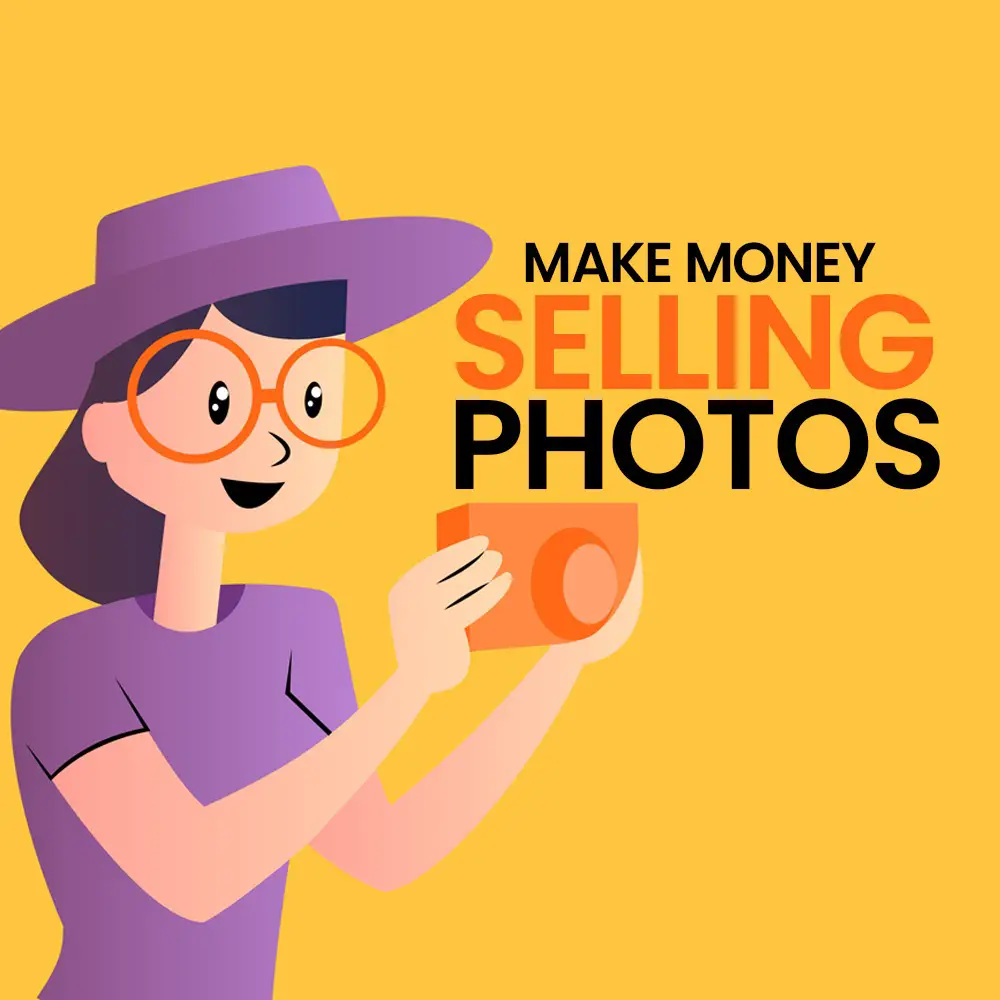
It’s important to have a consistent style or theme that runs through your work, whether it be travel, fashion, cityscapes, nature, food, etc.
People follow photographers online to see more of what interests them in the first place, and project managers may have some specific style of photos they need, so finding your niche is crucial.
Use keyword research tools like Ahrefs’ Keyword Generator to evaluate the demand for certain topics and aim for anything with an average monthly search volume of over 1,000.
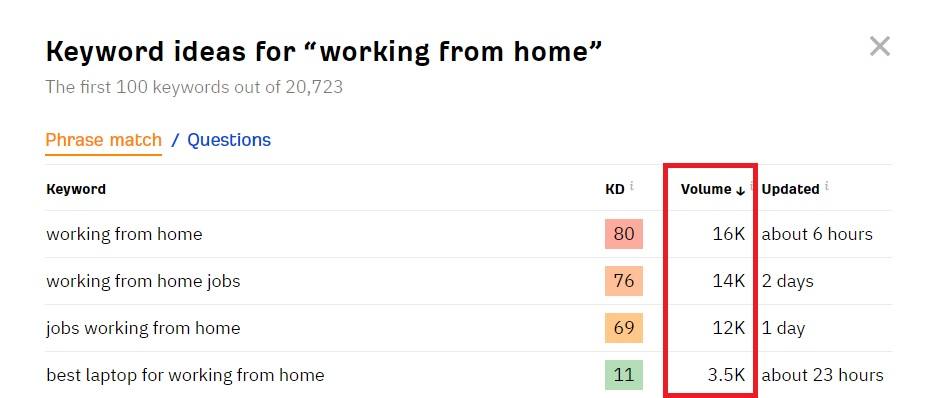
2. Sell Photos on Stock Websites
Probably one of the best ways for photographers to sell their photos is on stock photography websites.
However, keep in mind that most stock photography sites will require an approval process and won’t allow you to set your own prices.
Technically, when you sell your images, you retain the copyright and offer a royalty-free license, meaning the person who buys it has certain rights to use it but cannot resell it.
Some sites pay on a commission basis, and you may have to give exclusivity to one stock site.
Usually, when you give exclusivity to one stock photography site, the site will provide a higher commission rate.
So, there is a balance. However, our experience says you should go with non-exclusive rights to maximize profits.
Though the commission is lower, your images tend to get more exposure as it is listed on multiple sites, and the accumulated revenue might outweigh the revenue from exclusive rights.
Who Buys Stock Photos?
To sell photos online successfully, you need to know who buys them, right? So, know this.
Stock photos are bought by a wide range of customers, including individuals, businesses, and publishers. They are typically used for:
- marketing materials
- websites
- brochures, and more.
As long as you produce high-quality, in-demand images, there will always be someone out there willing to buy them.
Think about who your target audience is, and snap photos specifically for them, and you shall see demand for your photos.
How Much Can You Expect to Make?
Stock photographers generally make $0.02-$0.25 per image per month, but that’s a rough gauge. Your profitability highly depends on the popularity of the stock photos submitted.
So, the more you upload, the higher chance you have to get a bigger paycheck. For a start, we would not recommend relying on stock photography as the only means for income, do it for passion, and eventually, the gallery you have built over time will reap you the rewards.
Best Stock Image Sites to Sell Photos for Money
| Stock Photo Website | Non-Exclusive Rates | Exclusive Rates | Approval Difficulty |
|---|---|---|---|
| Adobe Stock | 33% | N/A | Strict |
| Shutterstock | 15% to 40% | N/A | Medium |
| iStock | 15% | 25% to 45% | Easy |
| Getty Images | 15% | 25% to 45% | Easy |
| Alamy | 40% | 50% | Medium |
| Dreamstime | 25% to 45% | 27.5% to 60% | Very Strict |
| Stocksy | N/A | 50% to 75% | Very Strict |
| Depositphotos | 30% to 38% | N/A | Easy |
| Can Stock Photo | 10.7% to 38.8 % | N/A | Easy |
| BigStock | 26.35 | N/A | Medium |
| Freepik | 50% | N/A | Strict |
| 123RF | 30 – 60% | N/A | Easy |
| 500PX | Up to 60% | Up to 100% | Medium |
Adobe Stock
Adobe Stock (formerly Fotolia) has been around for over a decade and is run by the dudes who created Photoshop and Lightroom, the most popular photo editing software out there.
That means your snaps will get some gnarly exposure to millions of potential buyers through the Adobe Stock library and other Adobe products.
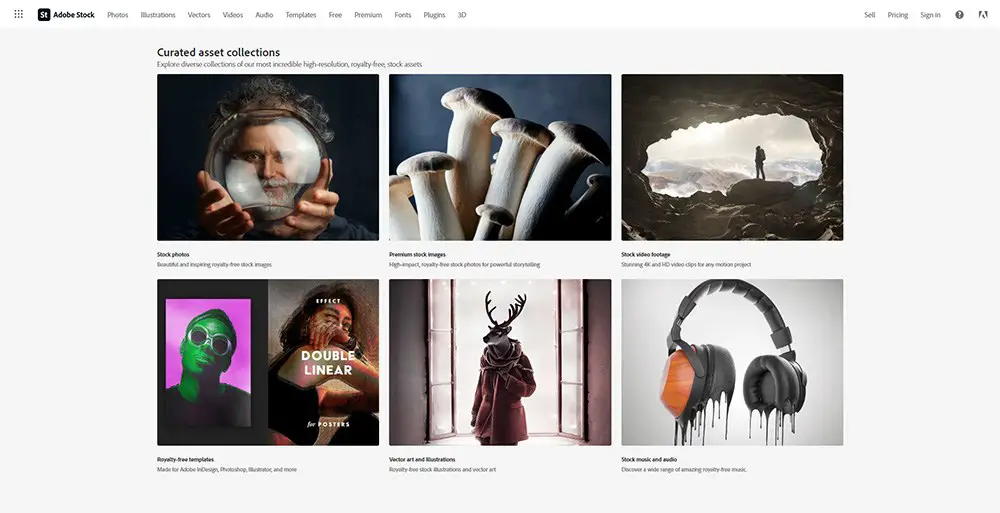
And with a royalty share of 33% on each sale of your photos, you’ll be stacking some serious cash if your photos become hot sellers.
Simply put, the rate is calculated from the monthly plan price divided by the number of photos included in the plan.
For example, if a plan costs $29.99 for 10 photos, each photo would have a royalty of $0.99 ($29.99 / 10 photos x 33%). The royalty may not be rounded to the nearest cent.
Plus, Adobe Stock doesn’t make you give up exclusive rights to your shots, so you can sell on Adobe Stock and other platforms at the same time. And when you start selling on Adobe Stock, your photos will also be available on Fotolia, which means even more exposure for your work.
The only bummer is that there’s some major competition from some of the world’s most talented photographers, but if you’re up for a challenge and ready to turn your passion for photography into profit, Adobe Stock is the way to go.
Shutterstock
Shutterstock has a massive audience of customers ready to buy your royalty-free content, and you keep your copyrights protected while building your brand.
As a Shutterstock contributor, you can earn anywhere from 15% to a gnarly 40% of each sale. And with over $500 million paid out to contributors worldwide, you know you’re in good company.
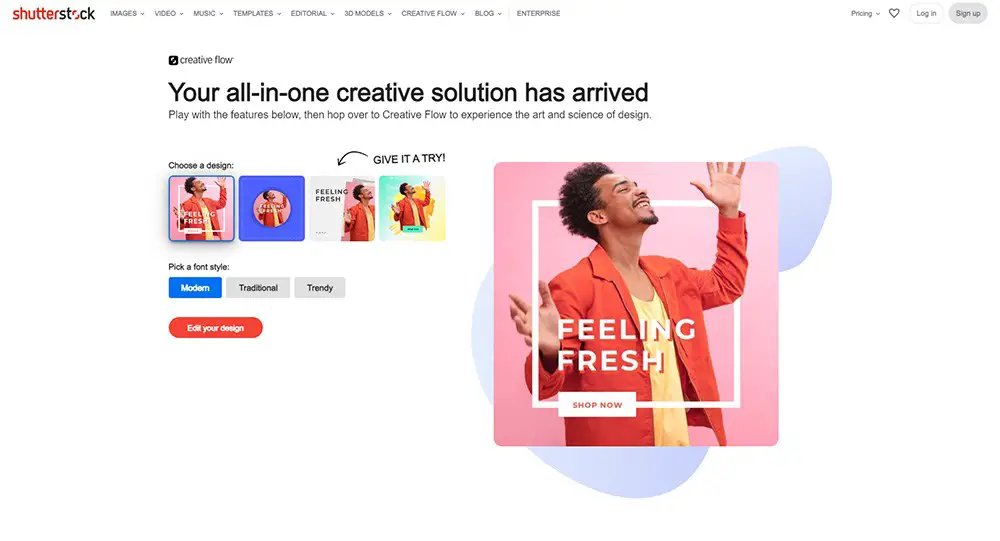
And the best part? You don’t have to stick exclusively with Shutterstock. You can sell on other stock photo sites too.
Here are the six earning levels for contributors:
| Image Levels | Number of image licenses this calendar year | You earn |
|---|---|---|
| Level 1 | Up to 100 | 15% |
| Level 2 | 101 to 250 | 20% |
| Level 3 | 251 to 500 | 25% |
| Level 4 | 501 to 2,500 | 30% |
| Level 5 | 2,501 to 25,000 | 35% |
| Level 6 | Over 25,000 | 40% |
The more high-quality images you upload, the more downloads you may get and the more money you’ll make. And if you refer new photographers or customers, there’s even an affiliate program that’ll pay you some extra cash.
In case you are wondering, here’s how Affiliate Marketing works.
Keep in mind that the competition on Shutterstock can be challenging, with some of the world’s most talented photographers also selling on the platform.
iStock (by Getty Images)
Owned and operated by Getty Images, iStock offers resources to help you get started and build your portfolio.

With a commission starting at 15% per photo download, you can make some serious dough if your photos become popular on the platform. The commission can go up to 45%, but only if the customer isn’t purchasing your image as part of their monthly or yearly subscription.
On the flip side, the process of joining iStock can be a bit more complicated than other stock photography sites. They’re strict about following their regulations for model releases and capturing photos in certain locations without permission.
And if you’re not into the exclusivity game, you can sell your photos to other platforms as well, but your commission will be lower.
Exclusive sellers get a tiered commission rate depending on how many licenses they sell each year, starting at 25% and going up to 45%. And for non-exclusive sellers, the commission stays at 15%. Here’s a table for easy reference:
| Number of Downloads | You earn |
|---|---|
| Non-Exclusive Rates | 15% |
| 0 to 1,049 | 25% |
| 1,050 to 11,234 | 30% |
| 11,235 to 45,674 | 35% |
| 45,675 to 681,082 | 40% |
| Above 681,083 | 45% |
If you’re looking for a steady income stream, consider going exclusive with iStock. But remember, the exclusivity contract comes with a 30-day notice period.
Getty Images
Getty Images is a popular platform that attracts brands and publishers looking for high-quality and exclusive stock images. It reaches over 1.5 million customers in over 200 countries, so your photos will have some serious exposure.

Getty Images offer the same royalty rates as iStock, as you saw above. When you list your photos on Getty Images, the non-exclusive royalty rates are fixed at 15%, and you can earn between 25% to 45% if you give them exclusive rights to your photos.
Alamy
Alamy is a British-based site with a collection of over 313 million images, vectors, videos, and 360-degree panoramic images, making it one of the world’s most diverse stock photo collections.
It’s got a huge following of over 60,000 contributors and 110,000 buyers worldwide, and you can sell anything from everyday images to specific niches.
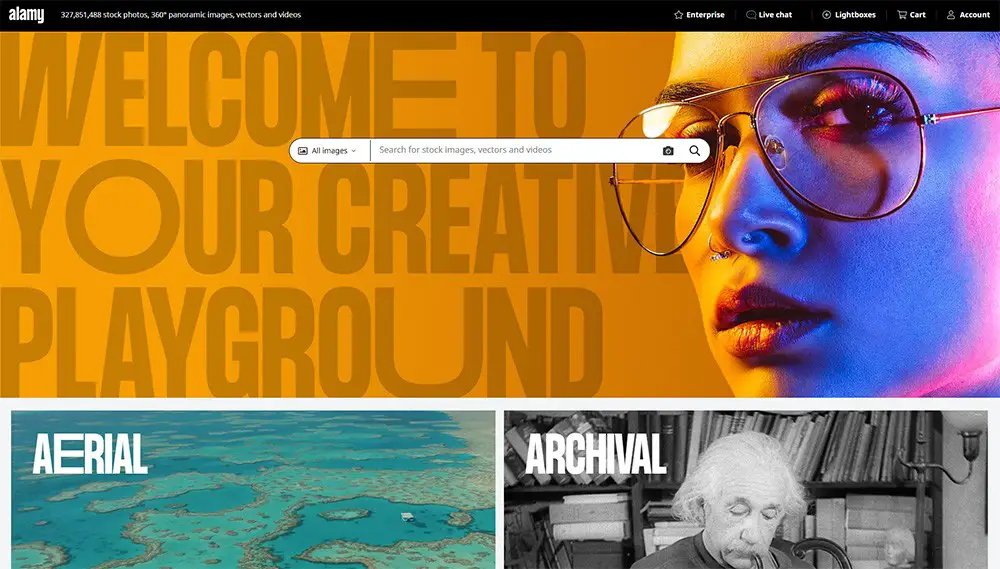
If your images are exclusive to Alamy, you can earn up to 50% off each direct sale. If they’re not exclusive, you’ll still earn a solid 40% off each direct sale.
This means that you don’t have to sell your photos exclusively to Alamy. You can sell them on other platforms too.
Considering the base royalty rate of 40%, it is one of the highest-paid platforms so far.
And if you want to earn some extra dough, check out their app, Stockimo, where you can sell your iPhone photos. The photos contributed through the app fetches a royalty rate of 20%, though.
Dreamstime
Beating Alamy in contributors’ royalty rate is Dreamstime. It has been the go-to source for top-notch images for nearly two decades, serving various clients, from independent individuals to big-time Fortune 500 companies.
With 31 million registered members, 600k contributing photographers, 144 million photos and counting, and 20 million unique visitors each month, you’re sure to get some major exposure for your shots.
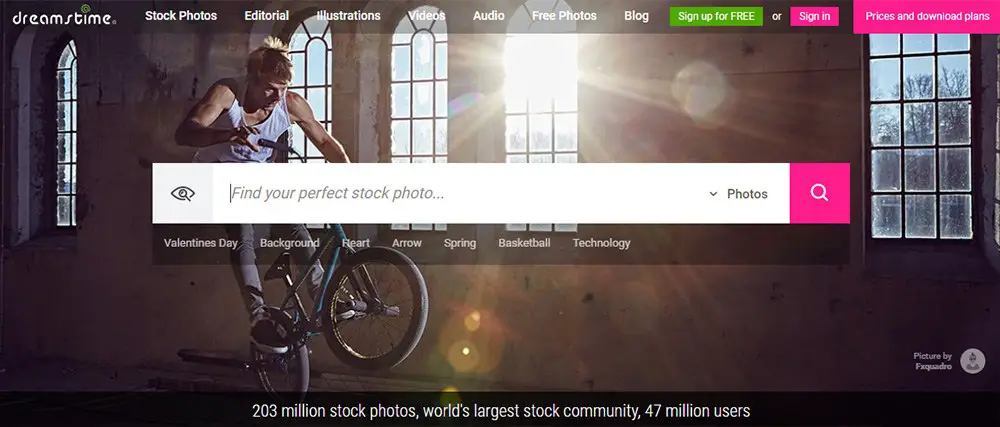
But just like anything worth doing, it requires a little bit of effort. To get the full payout benefits, you have to be in it for the long haul – you must keep 70% of your portfolio on the site for a minimum of six months. But trust me, the rewards are worth it.
The payouts are based on the “content level” – the number of downloads a particular image has, plus the license level, which determines the amount a buyer pays and your earnings.
For example, if an image has been downloaded at least 25 times, you can expect to earn between 45% to 60% royalties. But even if your photo is brand new with zero downloads, you can still earn between 25% to 60% royalties.
| Content Level | Non-Exclusive File | Exclusive File | Exclusive User |
|---|---|---|---|
| 0 – 1 (0 Downloads) | 25% | 27.5% | 60% |
| 2 (1 – 4 Downloads) | 30% | 33% | 60% |
| 3 (5 – 9 Downloads) | 35% | 38.5% | 60% |
| 4 (10 – 24 Downloads) | 40% | 44% | 60% |
| 5 (Above 25 Downloads) | 45% | 49.5% | 60% |
Here are the three different Dreamstime Contributor options:
- Non-exclusive Contributor, non-exclusive files: sell your files with no strings attached
- Independent contributor with some exclusive files: sell some files exclusively on Dreamstime
- Exclusive contributor, exclusive files: sell your files only on Dreamstime
Dreamstime is a perfect starting point for anyone looking to sell photos online – it’s user-friendly, with less stringent requirements compared to other sites like iStock, Getty Images, and Shutterstock.
Plus, you can curate your own galleries and have more control over your sales. Of course, there are some rules to follow, like no violent or copyrighted content, but as long as you keep it cool, you can expect to earn money in no time.
Stocksy
And, beating both Dreamstime and Alamy in contributor royalty rates is Stocksy.
Stocksy is not just any stock photography website. They’re an online cooperative of artists committed to high royalties, quality, and creative integrity. They’re not as big as some popular alternatives, like Shutterstock or Getty Images, but that’s a good thing.
It means they have a tough vetting process in place for their photographers; only the best and most talented photographers make the cut. So, if you’re accepted, you’re in good company.
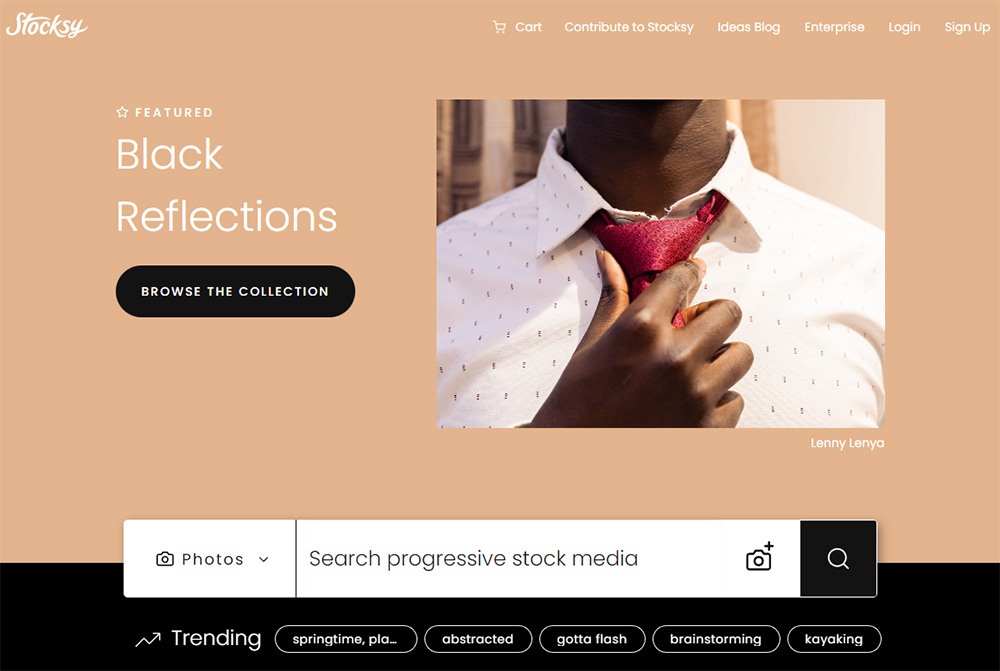
As a Stocksy contributor, you’re not just selling photos, you’re part of a co-op, which means you get part ownership of the business and can help steer its direction.
Photographers can earn a 50% royalty on standard licenses and a 75% royalty on extended licenses. That’s right! You get to keep between 50% and 75% of the total purchase. That’s the highest royalty in the entire industry.
One thing to keep in mind, though, is that all photos uploaded to Stocksy have to be 100% exclusive, which means you can’t reuse them on other stock photo websites.
But hey, it’s a small price to pay for high royalties, quality, and creative integrity. And, if you’re part of a “good year,” meaning Stocksy made profits for the year, you can receive profit-sharing through patronage returns.
Depositphotos
Depositphotos is a massive stock Image site with over 150 million files and clients from all over the world, including some big names like Warner Bros., TripAdvisor, and Subaru.
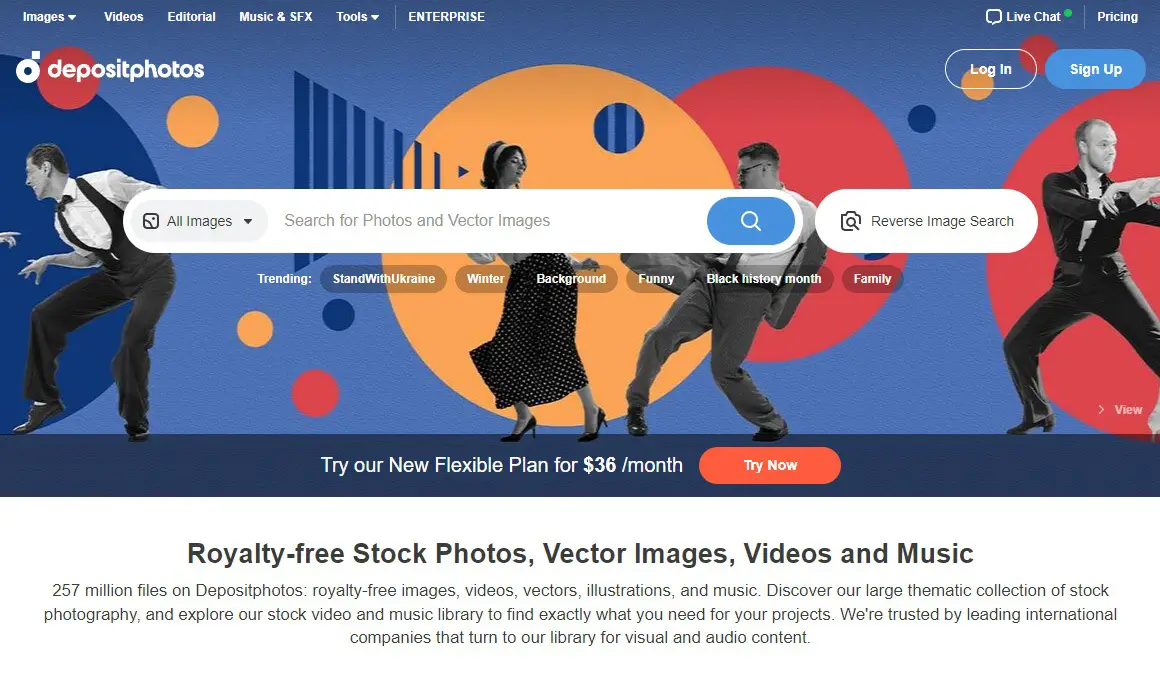
Commission rates range from 30% to 38%, considering your experience and status on the platform, which they call the “Contributor’s Level.
There are 5 contributor levels, Green, Bronze, Silver, Gold, and Platinum, and the contribution royalty rates are as follows:
| Contributor Level | You earn |
|---|---|
| Green (0 to 499 Downloads) | 30% |
| Bronze (500 to 4,999 Downloads) | 32% |
| Silver (5,000 to 24,999 Downloads) | 34% |
| Gold (25,000 to 149,999 Downloads) | 36% |
| Platinum (Above 150,000 Downloads) | 38% |
So, if you’re a seasoned pro, you’ll get more green from your snaps. It’s that simple.
And the best part? There’s no exclusive rights requirement, so you can sell your photos on other platforms as well.
CanStockPhoto
Over 92,000 photographers have figured out how to sell their photos through this platform. That’s a pretty solid crew to be a part of if you ask me.
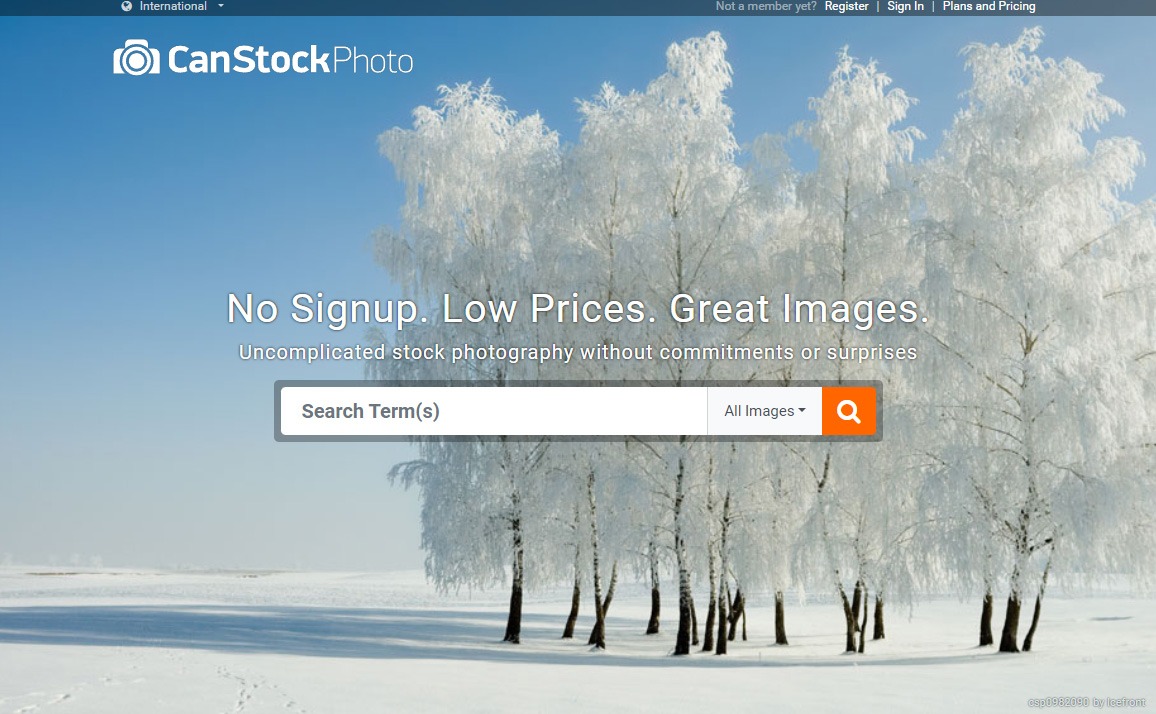
Can Stock Photo offers different payout structures, meaning you can get paid through a percentage of the sale or a fixed amount. To put it into context:
| File Size | Selling Price | You earn (Instant Downloads) | You earn (Credit Downloads) |
|---|---|---|---|
| Small JPEG | $3.50 | $1.00 (28.6%) | $0.50 (14.3%) |
| Medium JPEG | $7.00 | $1.50 (21.4%) | $0.75 (10.7%) |
| Large JPEG | $8.00 | $2.00 (25.0%) | $1.00 (12.5%) |
| X-Large JPEG | $9.00 | $2.50 (27.8%) | $1.25 (13.8%) |
| EPS Vector | $13.00 | $5.00 (38.5%) | $2.50 (19.2%) |
And, here’s a bonus – if you refer someone who then sells photos on the site, Can Stock Photo will give you five bucks for every fifty photos they sell. That’s a pretty sweet deal.
But that’s not all. Can Stock Photo also lists your photos for sale on another stock photography agency called Fotosearch for images you’ve listed with extended rights.
So, not only can you sell your photos directly through Can Stock Photo, but you can also reach a wider audience through their partnership with Fotosearch.
BigStock
BigStock is a Microstock agency that’s been around since 2004 and was acquired by Shutterstock in 2009. With over 43 million royalty-free images and a trusted reputation, you can be sure that your photos will be seen by potential buyers.
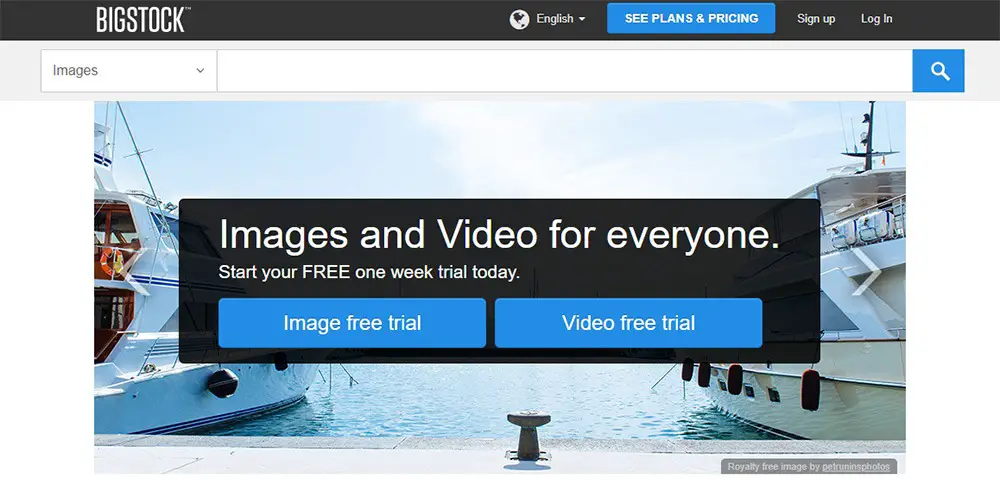
You’ll generally make a fixed rate per download, but based on the breakdown below, you’ll earn about 26.3% royalties for Credit Downloads. Here’s the denomination:
For purchases using Credits:
| File Size | Average Cost per Credit ($1.90) | You earn (Instant Downloads) |
|---|---|---|
| Small | 1 Credit ($1.90) | $0.50 (26.3%) |
| Medium | 2 Credits ($3.80) | $1.00 (26.3%) |
| Large | 4 Credits ($7.60) | $2.00 (26.3%) |
| X-Large | 6 Credits ($11.40) | $3.00 (26.3%) |
| EPS Vector | 6 Credits ($11.40) | $3.00 (26.3%) |
Purchases from Subscription Plans:
| Royalty Tier | You Earn (Per Download) |
|---|---|
| 1 to 199 Downloads | $0.25 |
| 200 to 999 Downloads | $0.27 |
| 1,000 to 1,999 Downloads | $0.29 |
| 2,000 to 9,999 Downloads | $0.31 |
| 10,000 to 19,999 Downloads | $0.33 |
| 20,000 to 49,999 Downloads | $0.35 |
| Above 50,000 Downloads | $0.38 |
Plus, BigStock lists your images for sale on its partner sites as well, and you will earn 30% of the amount BigStock receives from its partners.
In short, BigStock is a solid choice for those looking to make money selling photos online. With its credit system and reputation, you can be sure that your photos will be seen and sold to potential buyers.
Freepik
With the Pay Per Download (PPD) model, earnings are calculated based on the share of the net revenue obtained from Freepik’s Premium subscribers.
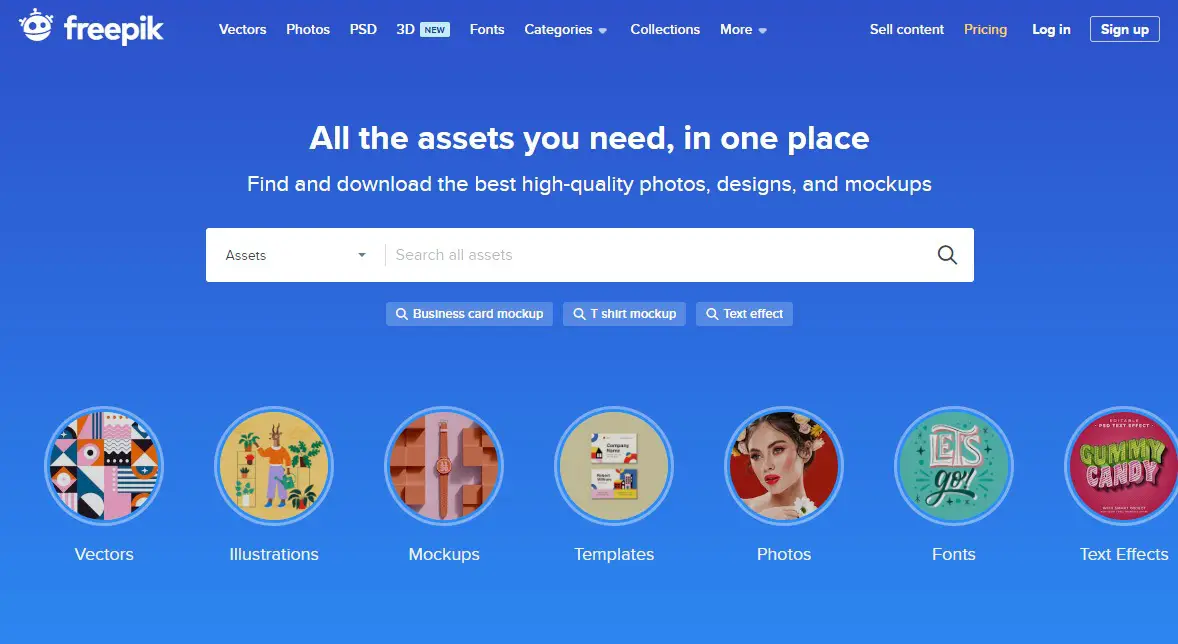
The best part? The revenue is shared among contributors, with a 50% revenue share for each contributor.
How it works: Premium subscribers pay EUR 15 per month, and at the end of the month, 50% of premium fees collected will be shared with the contributors based on the number of downloads each contributor receives.
The formula used to calculate the remuneration of a single download is:
Net Revenue from Subscriber A / Downloads made by Subscriber A)* 50% revenue share = one download remuneration.
There’s no limit to how much you can make, keep uploading high-quality photos and let the Premium subscribers do the rest.
Take note that there is a review process, and you can only upload photos when approved.
123RF
123rf is a microstock agency that allows photographers, graphic designers, and videographers to sell their work as royalty-free stock content.
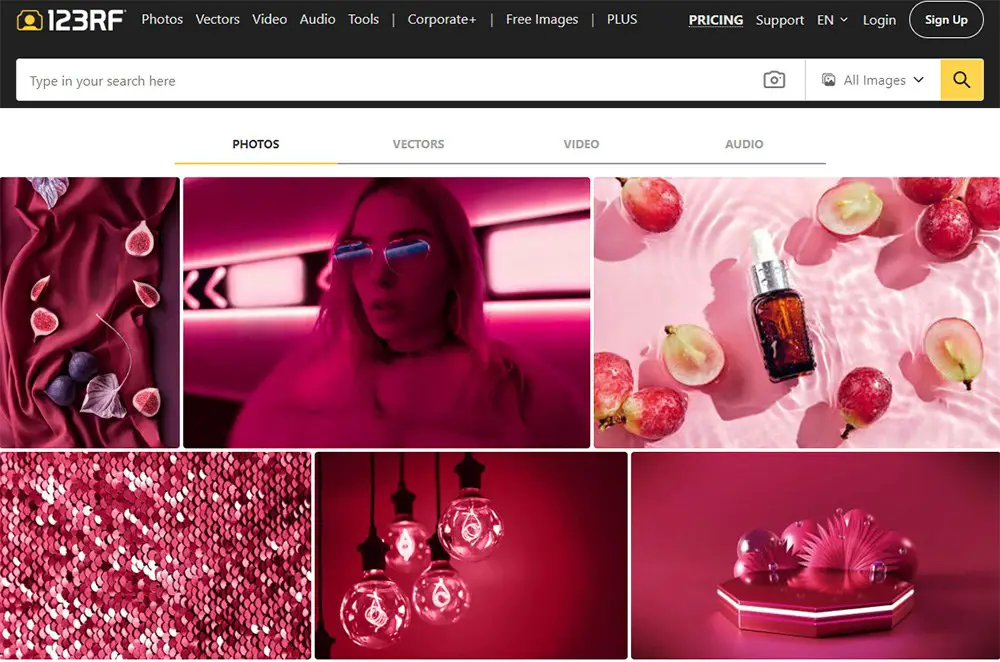
The payout structure at 123rf is pretty solid, with contributors earning anywhere from 30% to 60% of the sale price of their content. Similar to BigStock, there are 2 avenues to earn from:
| Contributor Level | Subscription | Credits |
|---|---|---|
| 1 (0-999) | $0.216 | 30% |
| 2 (1000-4999) | $0.288 | 40% |
| 3 (5000-19999) | $0.360 | 50% |
| 4 (20000-49999) | $0.374 | 52% |
| 5 (50000-99999) | $0.389 | 54% |
| 6 (100000-499999) | $0.403 | 56% |
| 7 (500000-999999) | $0.418 | 58% |
| 8 (>1,000,000) | $0.432 | 60% |
However, unlike BigStock where the levels are determined by the number of downloads, the contributor level in 123RF is determined by the total License points earned in 12 month period:
| Image Size | License Point |
|---|---|
| Subscription | 1 |
| S | 2 |
| M | 4 |
| L | 6 |
| XL | 10 |
| EPS | 10 |
| Print EL | 50 |
| Electronic EL | 75 |
| Comprehensive EL | 100 |
The good thing about 123RF is that it does not require contributors to sell exclusive rights to their content.
Contributors retain the copyright to their work and can continue to sell it on other platforms. However, 123rf does offer exclusive deals to contributors, which can lead to higher earnings and more visibility on the platform.
500px
500px is one of the most popular photography websites that’s filling the void left by Flickr. Not only can you store your photos, but you can also sell them to over a million customers.
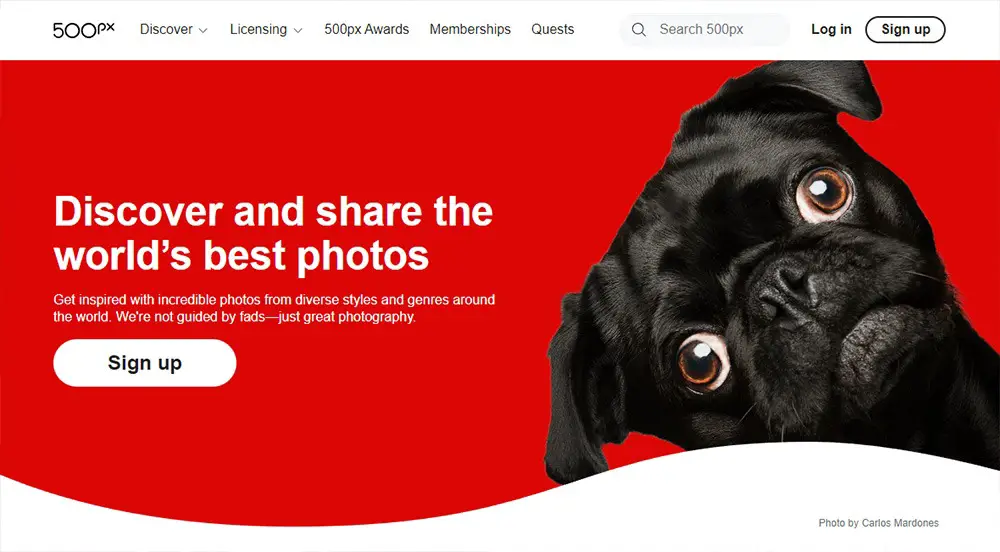
As a contributor, you get two options for licensing your images: exclusive or non-exclusive.
Obviously, if you choose exclusive, you’ll earn more, but you won’t be able to license or sell the photo to anyone else.
Free users can earn up to 60% for non-exclusive photos, and paid users can earn up to 100% for all licenses sold.
With its “Pulse Algorithm”, it increases your image exposure as it displays new uploads to a discovery page viewed by thousands of visitors daily.
Plus, your submitted and accepted photos will appear on Getty Images as well, so you don’t have to worry about getting lost in the crowd.
